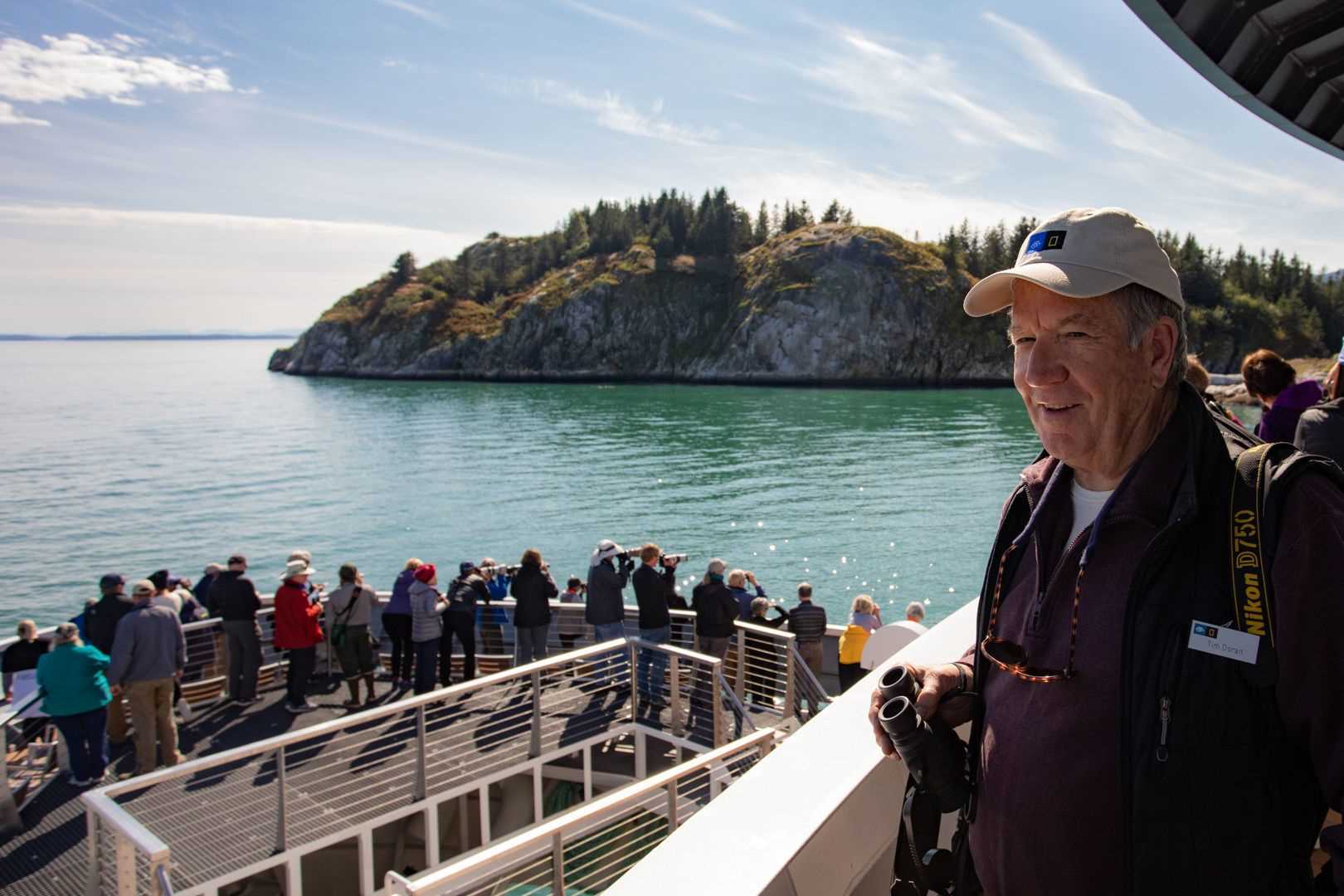Johns Hopkins Glacier is one of the last remnants of the magnificent ice sheet that covered all of Glacier Bay National park when John Muir arrived here nearly 150 years ago. Many of us awoke this morning to the subtle thud of ice chunks against the hull of the ship, and the glint of Johns Hopkins Glacier in the early sunlight. A fresh chill off the wall of ice looming a quarter mile ahead of the ship permeated morning stretch class, and photographers warmed their lenses on the bow. Our National Park Service Ranger Patrick Otero, and Alaska Native Voices Interpreter Kevin Skeek took the lead on our natural history and cultural education this morning. They shared both their personal and professional stories and perspectives on this unique environment, which is a nexus for issues of heritage, policy, reconciliation, and regrowth.
Glacier Bay National Park and the area surrounding it boast the second highest rates of isostatic rebound in the world. This means that the land in this area is rising quickly after its compression beneath miles of ice, uncovering nearly two inches of new shoreline annually. As we make our way down bay back towards Bartlett Cove, the evidence of ecological succession is everywhere—the slow expansion from moss to scrubby alders and other nitrogen fixing undergrowth to the deep dark evergreen hues of spruce.
Mid-afternoon we landed at the Forest Service dock in Bartlett Cove and had the opportunity to stretch our legs along the friendly, wide trails maintained by the Park Service and the Glacier Bay Lodge. The passing of Labor Day on Monday was the tolling of the bell for the tourist season in Southeast Alaska and the lodge had shut its doors. Instead of mourning the lack of free Wi-Fi, we enjoyed gorgeous afternoon sunshine on the rocky beaches. A sunset over the aptly named Fairweather Range ushered us into a southerly passage to Tracy Arm, and another day of exploration through the ice.







